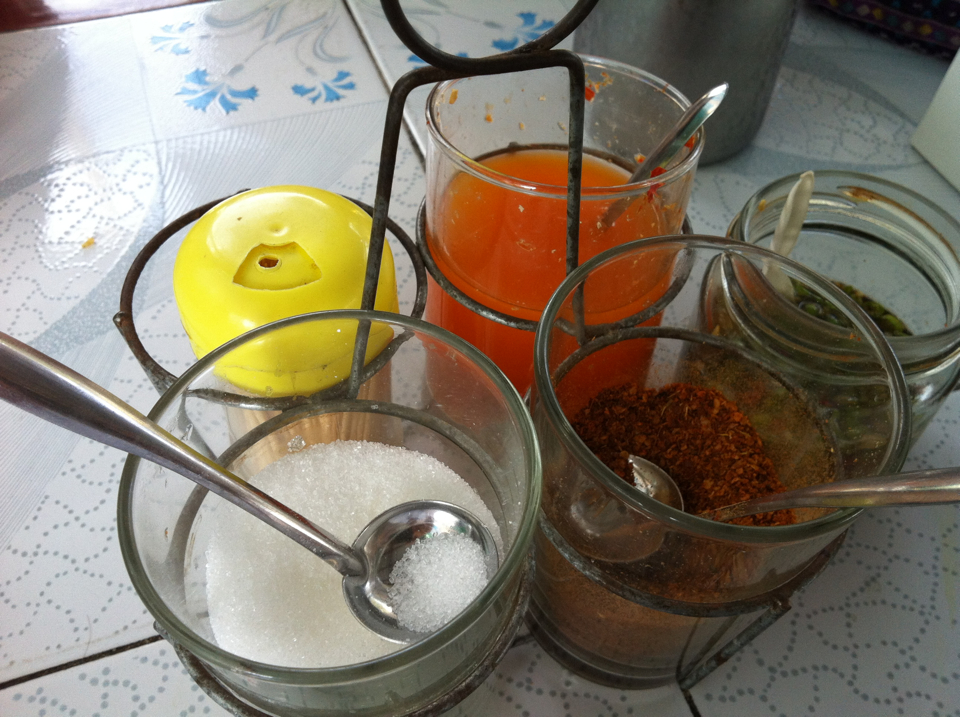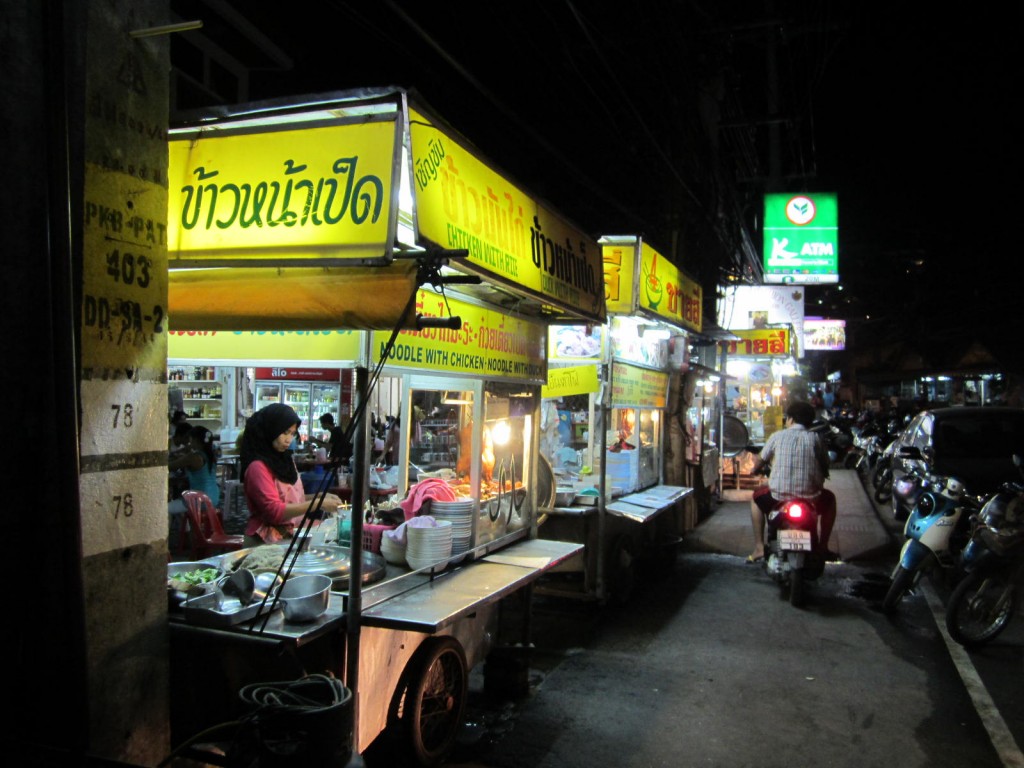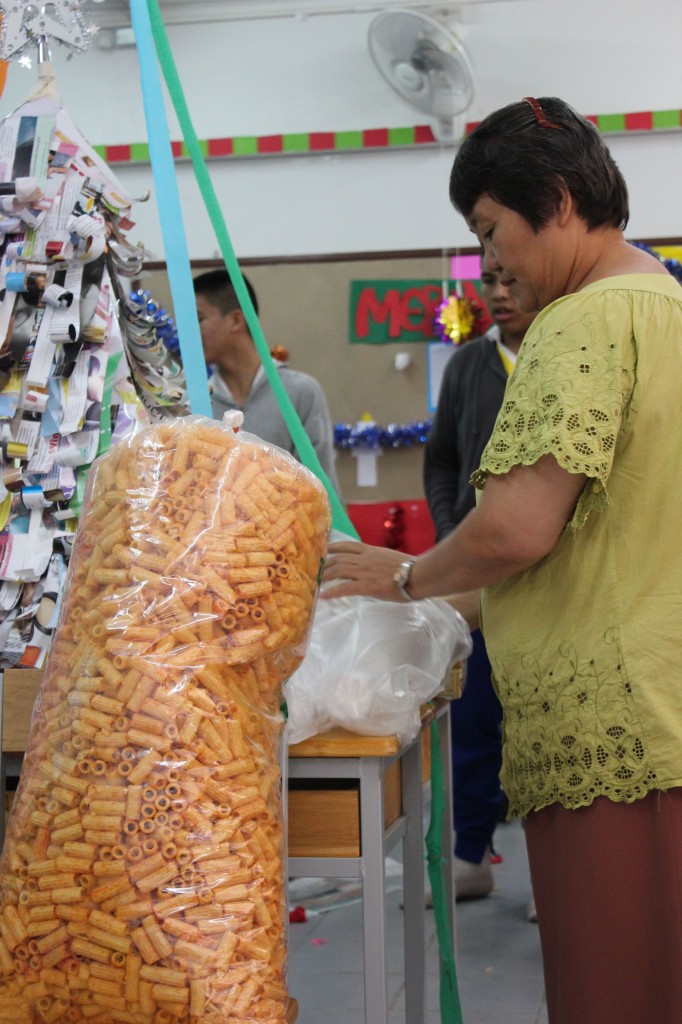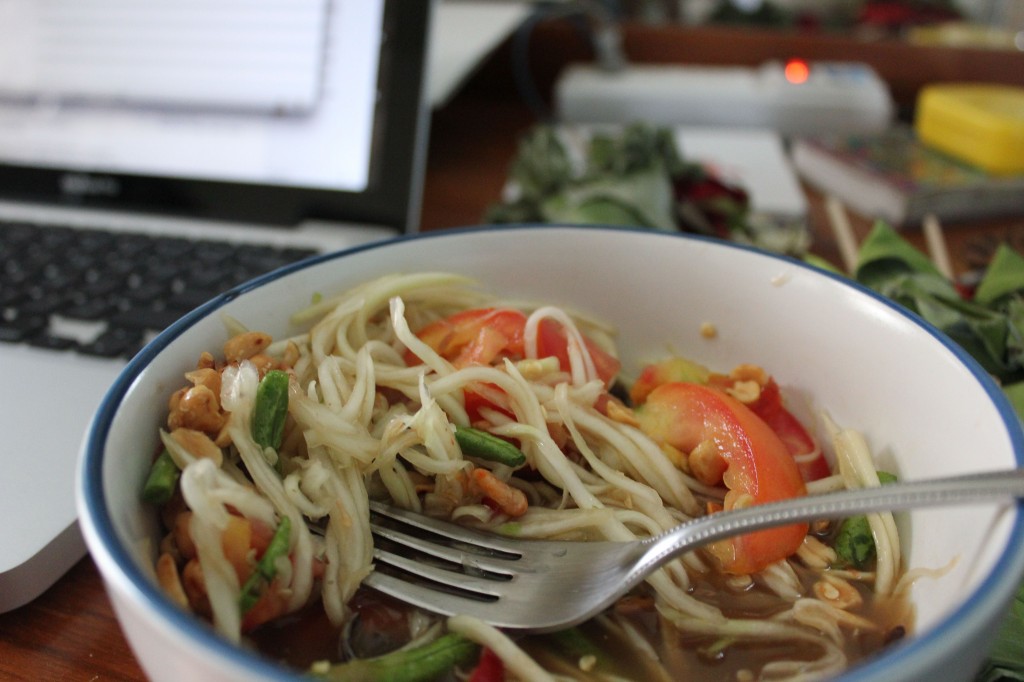“Whats the food like there?”
“Well its really spicy. A lot of rice, a lot of noodles, and a lot of stir fried things.”
A different relatives enters the room.
“Max, how’s the food there? Whats it like?”
“Ha ha, well everything comes with rice or noodles basically. It can be really spicy, and theres a lot of vegetables, chicken, and pork.”
Yet another relative enters the room.
“Oh Max, the food must be delicious! Whats it like?”
So, Skype isn’t always conducive to conversing with a flow. Especially when there are ten people on the other end who can’t all be around the computer at the same time.
LISTEN UP! Thai food is just a bunch of rice with some stuff on it. Stir-fried stuff. Lots. Of. Rice. I mean, look at all this rice!
Ok, its not just rice. Sometimes there’s some pork blood in your soup, sometimes there’s a jellyfish in your hot pot, and other times there’s just barbecued cow udder on a plate. Actually, the pork blood soup, baa mii nam dtok, has grown on me. Disclaimer for all Jewish people heading to Thailand: Baa mii nam dtok, contains porks blood broth, coagulated chunks of porks blood, and bbq pork. Not sure how kosher it is. Also…you might want to watch out for this:
 Moving along. No, I didn’t walk up to the first street vendor I saw outside the airport and say, “Give me your finest cow udder, my good man.” I worked my way up to these delicacies. It started with (duh) pad Thai. Every American on a coast has had this dish. But this was the first time I had seen the spice system. Every table you ever sit at in Thailand comes with a rack containing four jars. Red spice, pepper vinegar, sugar, and fish sauce.
Moving along. No, I didn’t walk up to the first street vendor I saw outside the airport and say, “Give me your finest cow udder, my good man.” I worked my way up to these delicacies. It started with (duh) pad Thai. Every American on a coast has had this dish. But this was the first time I had seen the spice system. Every table you ever sit at in Thailand comes with a rack containing four jars. Red spice, pepper vinegar, sugar, and fish sauce.
I’m from Southern California, we eat lots of spicy ethnic food there, I can handle spicy. Famous last words. Four spoons of red spice later and I’m sweating and crying in public, drinking three iced teas, and Thais are laughing at me. After destroying all of my taste buds for the first month, I can now handle pretty much any som tam, tom yum, or yum woon sen you throw my way!
 Once my spice tolerance was up to par, I had to find out how to not get sick of rice. The trick to unearthing all of the culinary possibilities contained in rice, noodles, vegetables, and meat is learning enough of the Thai language to be able to unlock the “secret menu.” There are several things to keep in mind while exploring Thai food:
Once my spice tolerance was up to par, I had to find out how to not get sick of rice. The trick to unearthing all of the culinary possibilities contained in rice, noodles, vegetables, and meat is learning enough of the Thai language to be able to unlock the “secret menu.” There are several things to keep in mind while exploring Thai food:
1) Most vendors have no menu. They might provide an English-language menu, but its very limited, so its important to learn some Thai.
2) One needs to learn to look at each cart and guess what the vendors can make based on what ingredients they have out and what kind of cooking utensils they’re wielding.
3) Drop all fears of embarrassment. Anytime you see a Thai person eating something that looks good, run up, point at it, and ask, “An nii cheu alai? (“What is this called?”). Although, I will say from experience that this tactic will help you repeat a dish-name, like baa mii nam dtok, but repetition doesn’t create a realization that there is pork blood in your soup. You just have to let ignorance bring bliss and repeat the mantra, “When in Siam, do as the Thais do.”
Thais often list their favorite activities as eating and sleeping. Many Thai restaurants cut to the chase, skip seating arrangements, and instead have bamboo mats and pillows so you can eat, lay down, sleep and digest. Pinch me. But its not just a world of food-induced comas over here; food has more meaning than that. Awareness is a major concept of Thai Buddhism. That is, being aware of everything in the present moment. Aware of your feet on the ground, the weight of the air on your skin, your own breath, and the giant chunk of sticky rice doused in the spiciest of nam prik which is now burning a hole in your stomach (I could do an entire blog post on sticky rice. Hell, I could do a series of blogs about my love affair with sticky, white, beautiful kaew neeyao). So when Thais eat, they don’t joke around. It isn’t a time to small talk, to read the paper, or deal with many distractions. They focus on their eating. Many Thai families are silent as they eat, devoting all their attention and awareness to the food in front of them (I’m usually devoting all my attention to controlling the spice-induced sweating).
 But eating isn’t just a solo-spiritual affair; Buddhists love sharing. All social events have food. Every school event usually has a bag of sticky rice and a chicken leg. I haven’t been to a funeral or wedding yet without pork rinds (those bags are usually four feet tall). An event could have absolutely everything go wrong. People could show up late (they probably will since they’re on “Thai-time”), the whole event could be off-schedule, or a sudden monsoon could rain out the party, but without a doubt: There. Will. Be. Sticky. Rice. I’m ok with this fact of life here. I love food. But not like Thais love it, and somehow they’re all skinnier than us Americans. We’re doing something wrong…the answer may lie in sticky rice.
But eating isn’t just a solo-spiritual affair; Buddhists love sharing. All social events have food. Every school event usually has a bag of sticky rice and a chicken leg. I haven’t been to a funeral or wedding yet without pork rinds (those bags are usually four feet tall). An event could have absolutely everything go wrong. People could show up late (they probably will since they’re on “Thai-time”), the whole event could be off-schedule, or a sudden monsoon could rain out the party, but without a doubt: There. Will. Be. Sticky. Rice. I’m ok with this fact of life here. I love food. But not like Thais love it, and somehow they’re all skinnier than us Americans. We’re doing something wrong…the answer may lie in sticky rice.
Yes the Thais love to share their food, so don’t even think of trying to diet here. There’s no escaping Buddhism and its generosity in this country, which in turn means there’s no escaping sticky rice. The most important lesson a farrang can learn is to always accept offerings of food. I’ve never seen such hurt in a Thai person’s eyes as when I decline an offer.
“Maxwell, you eat this!”

“No thanks! I’m really full.”
“Whats wrong with it? You don’t like this?”
“No, no, I love som tam. I’m just really full!”
“Oh………”
“OK ok ok, sure I’ll take the som tam.”
“Good, Maxwell, eat eat!”
Am I becoming an adventurous eater? Or am I too nice to see sad Thai puppy dog eyes? Either way, it means when someone points me towards a soup with pork intestines and chicken liver in it, I sit, and am totally aware of that pig’s intestine visiting mine. Too aware.


